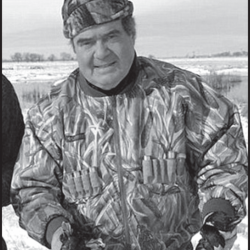This issue's articles are available below.
ELI Members may login to read and download current and past issues of the Forum.
Not a member? Join now!

Not your father's reinvention initiative, E-Enterprise for the Environment was developed by a joint state-federal workgroup to move beyond the cooperative model that has characterized environmental protection into a system of shared responsibility among co-regulators.
With a SIDEBAR by Anda Ray of the Electric Power Research Institute

In what appears to be the new normal when it comes to defining "waters of the United States," every effort that seeks to clarify that term, and in turn, the reach of federal authority to regulate water pollution, breeds yet more confusion.

Criminal prosecution for major regulatory offenses, for a while the norm and then the exception, is once again on the rise. Government officials, facing dwindling enforcement budgets, are hauling malfeasant corporations and their executives into court to face charges.
With SIDEBARs by representatives of the Justice Department | the defense bar | and the oil and gas industry.

The late Supreme Court Justice Antonin Scalia’s approach to environmental law reflected an intense concern about its constitutional legitimacy and worries about promoting elitism and restricting economic freedom and personal autonomy.

There are now more than 700 HCPs nationwide, with additional plans in preparation. While a number of HCPs have been based on a more conventional model of bilateral, single-project permits that merely seek to mitigate harm to listed species, the more noteworthy HCPs are landscapewide and focused on multiple species. These plans each cover hundreds if not millions of acres and even an entire state. As this concept matures, it is outgrowing the ad-hoc way in which plans have been crafted, funded, and managed. The question is how can this area-wide, collaborative HCP concept be improved and implemented to more expeditiously and effectively provide for habitat conservation in concert with needed infrastructure and development?
Implementation is key to Obama’s new project environmental mitigation policy.
A journey of transformation in corporations’ approach to risk.
Cities and states struggling with mitigation of urban heat islands.
Zika, lead, bad water quality, and why sex just isn’t so much fun nowadays.
The Paris Agreement lays a good foundation for climate progress in the future.
The tale of two different cities: Medellin, Colombia, in the 1990s and today.
Latest climate change worry: Lakes are warming faster than air, and ecosystems can’t cope.
On Bees and the Anthropocene
Our occasional compendium of job changes and honors.
ELI promotes peacebuilding at climate change event.
On Natural Resource Management and State Fragility in the African Context.
Scott Fulton on the stay of the Clean Power Plan.